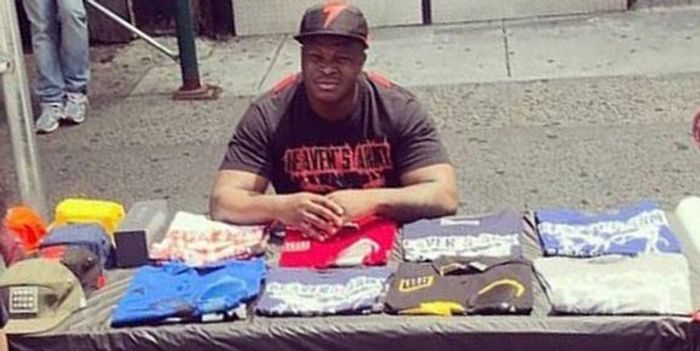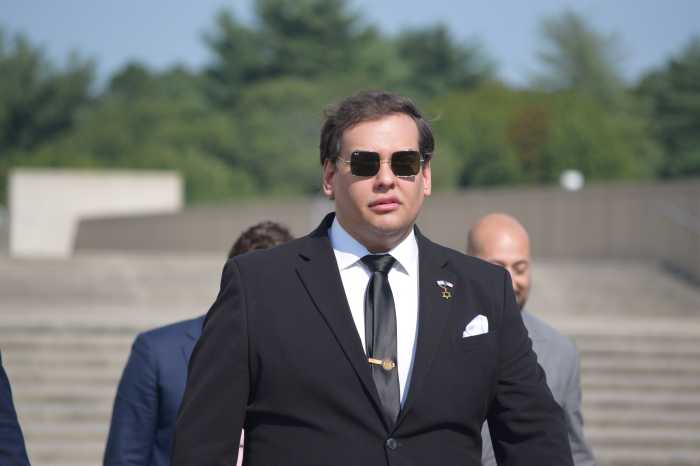![]() | BY GREG B. SMITH, THE CITY
| BY GREG B. SMITH, THE CITY
Less than a week after police fatally shot a schizophrenic man who seriously injured a cop in a Brooklyn nail salon, his sister got a shocking call from a city mental health official.
“They’re asking me, ‘How’s my brother?’” Ama Ashun recalled Thursday.
“It’s impossible they don’t know this,” she told THE CITY. “I told them he’d been shot by the police. I said, ‘This phone call is very triggering.’ I hung up. I mean, how much can a person take?”
For Ashun, the phone call epitomized her family’s frustrating and ultimately tragic experience trying repeatedly to get help from the city for her long-troubled brother Kwesi Ashun.
The 33-year-old was shot by cops Oct. 25 after they say he ran into Goldmine Nails in Brownsville, where officers were trying to arrest a man who’d urinated on the floor of the salon.
Police say Kwesi Ashun began fighting with the cops and was fatally shot after he whacked Officer Lesly Lafontant in the head with a metal chair.
Lafontant suffered a serious head injury and was for a time put into a medically induced coma. He has since been released from the hospital.
Dangerous Dilemma in Dealing with Mentally Ill
How Kwesi’s struggle with mental illness led to his death underscored the Catch-22 loved ones and health professionals face when dealing with the seriously mentally ill: his family was told there was no way to get him off the streets until he actually committed a violent act.
In the end, a city mental health worker told his sister all she could do was call 911 – the very scenario the family was trying desperately to avoid.
“I said to her, ‘That makes me very scared to call the police to show up to deal with a mentally ill black man,’” Ama Ashun said. “She said she understood, but unfortunately no matter what, the police will show up.”
Since 2015, police have killed 15 people dealing with mental health crisis.
Mayor Bill de Blasio’s wife, Chirlane McCray, has touted success in helping the mentally ill through ThriveNYC, a $1 billion program that’s been criticized for delivering little to the seriously mentally ill. THE CITY reported in March that the program has had a hard time retaining key staffers.
Last week, de Blasio announced a limited experiment to team mental health workers with cops during 911 calls — a plan critics immediately assailed as too little too late.
In and Out of Psychiatric Wards
Ama Ashun, a middle school science teacher, said her brother was first diagnosed as schizophrenic and bipolar when he was 19. A series of events — as described to THE CITY by his sister — followed that would see the struggling young man examined repeatedly in city and state psychiatric wards, at least four times in the last 15 years.
His first visit was to Kings County Hospital, the city-run facility his parents took him to in 2004 when the family first noticed something was off. He was diagnosed, prescribed medication and sent back home to his parents’ apartment along the edge of Prospect Park in Flatbush.
But that November he wound up in Bellevue Hospital, another city-run facility, after he attacked a police officer on Ocean Avenue in his home neighborhood. Kwesi managed to cut the cop’s arm and was arrested.
“He felt threatened by police officers,” his sister recalled. “He had a fear of what you would consider authority. And also of being stopped and frisked and having unfortunate interactions with police officers.”
It’s not clear what happened in that case because the records are sealed. But his sister said Kwesi was only briefly incarcerated and returned home soon after.
“He had a lot of family support,” she said. “He has eight siblings. He lived with my parents and at least four other siblings. He had lots of eyes on him. We looked out for signs of him spiraling. But of course, he had a lot of struggles still.”
In 2012, Ashun said her brother had become obsessed with God and Jesus and was convinced someone in the government was “listening to his thoughts.” She asked him to submit to an examination at SUNY-Downstate Hospital in Flatbush, and he agreed.
He was hospitalized again for a brief time, then sent back home.
Later that year, he was hospitalized again — apparently at Bellevue — after he caused a disruption in Manhattan. Once again, he was released and sent home.
‘Mastered the Art of Masking’
As the years passed, Ashun said, her brother held jobs in the retail clothing industry and started his own company, Kwesiaga Inc., designing and selling t-shirts. He’d created a logo: a bird with outstretched wings and the phrase “Heaven’s Army.”
“It allowed him to create, which was very important to him with his struggles,” she said. “He wanted to create a brand that would live on.”
But her brother had “mastered the art of masking” his mental struggles, she said, and would sometimes go off his meds. At times, her father went into his room to count the pills to see if he was on or off his regimen.
Starting last April, her brother’s mental stability again began to deteriorate. His father had been hospitalized and intubated after going into septic shock. The same day that happened, Kwesi had lost a job.
“He was trying to hold it together the best he could,” Ashun said.
In early October, one of her other brothers saw Kwesi selling his t-shirts on a Brownsville street corner the family considered dangerous. That corner was right next to Goldmine Nails on Mother Gaston Boulevard.
Ashun asked a friend who was a counselor what to do about her brother. She was directed to City Hall’s hotline NYC-WELL.
Thus began her voyage into the program that runs the hotline, ThriveNYC.
Hoping for Help, but Not the Police
On the first call she was on the phone for 45 minutes, answering a long list of questions. At the end, she was given a case number and assigned a mobile crisis team — mental health clinicians who would interview Kwesi and determine his care going forward.
The teams are called in for individuals “if they are experiencing or at risk of experiencing a psychological or psychiatric crisis and are unable or unwilling to access care.” In other words, the teams are supposed to intervene before disaster strikes.
Ashun says she warned them, “When you go see him, he will not be disheveled. He is very articulate. Don’t expect him to be out of control. I’m telling them that because he’s good at acting.”
On Oct. 14 – 12 days before Kwesi’s fatal confrontation with police — a mobile crisis team out of Kings County Hospital visited him at his parents’ home. The next day they made a follow-up phone call to Ashun.
The clinician told her Kwesi couldn’t be involuntarily committed unless he was deemed a threat to himself or others, and they saw no evidence of this during their visit. They instructed her to call 911 if he displayed signs of violence, which would, of course, involve the police.
Ashun told the city mental health worker of the 2004 attack on a cop and tried to make clear that her brother had a long-standing fear of police officers.
In a follow up call three days before the nail salon incident, a mobile crisis team member mentioned that the family could go to court to have Kwesi committed, but Ashun feared that even if she won a court order, police would be summoned to bring him to a hospital.
“I’m trying to avoid anything involving the police,” she said. “I thought it would end up triggering him.”
One of her other brothers called her the night Kwesi was shot by police. She said she does not want to think about what happened inside the salon or what could have set him off. She noted that her brother had known the man the police were trying to arrest from growing up together.
On Friday, their 82-year-old father was supposed to come home from the nursing home where he’s been staying since his hospitalization. That return has been cancelled for the moment.
“They’re not recommending that he come home because he’s so distraught,” Ashun said, “and with my brother not being there anymore.”
This story was originally published by THE CITY, an independent, nonprofit news organization dedicated to hard-hitting reporting that serves the people of New York.

































